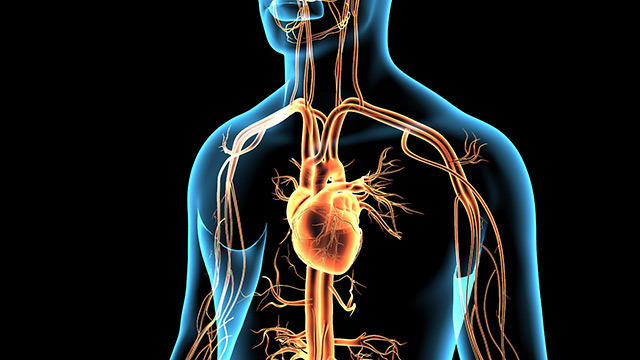Researchers say insulin resistance is linked to adverse lipid profiles in individuals with excessive abdominal fat
06/18/2019 / By Michelle Simmons

Having excess belly fat does not only look bad, it is also bad for your health. Abdominal obesity is associated with an increased risk of insulin resistance. This may contribute to dyslipidemia or abnormal lipid levels. However, the link between insulin resistance and fat metabolism in abdominally obese individuals is not understood. Therefore, researchers at Southeast University and Ningxia Medical University in China investigated this link and found that high postprandial insulin resistance is associated with adverse lipid profiles in people with abdominal obesity.
In the study, the researchers hypothesized that dyslipidemia would be worse in abdominally obese individuals with high postprandial insulin resistance. To test this hypothesis, they measured the glucose, insulin, triglycerides, total cholesterol, high-density lipoprotein cholesterol, and apolipoprotein B of both healthy individuals and abdominally obese individuals with low, middle, and high postprandial insulin resistance. They categorized the insulin resistance of obese individuals based on the tertiles ratio of the insulin to glucose areas under the curve (AUC). The researchers then measured the parameters at the beginning of the study and 0.5, one, two, four, six, and eight hours after the subjects consumed a high-fat meal.
Their results revealed that obese participants with high postprandial insulin resistance had higher fasting serum leptin, higher postprandial triglycerides, but lower high-density lipoprotein (HDL) or “good” cholesterol than the other participants. On the other hand, the total cholesterol and apolipoprotein B of abdominally obese subjects with different degrees of postprandial insulin resistance were similar to those of the controls.
Based on these findings, the researchers concluded that the consumption of a high-fat meal increases triglycerides but reduces HDL cholesterol in abdominally obese subjects with high postprandial insulin resistance. This suggests that the higher the postprandial insulin resistance of obese individuals, the more adverse their lipid profiles. The study was published in the journal Nutrition Research.
Why belly fat is more dangerous than other fats in the body
Excess fat around the abdomen is subcutaneous fat and visceral fat. Subcutaneous fat sits under the skin, as opposed to visceral fat which surrounds the organs. Research shows that excess storage of visceral fat is a major risk factor for complications linked to obesity, such as fatty liver, heart disease, and Type 2 diabetes.
In healthy individuals, fat cells can grow, recruit cells to help reduce inflammation, and reconstruct themselves to enable healthy growth. However, when there is excess fat tissue, these processes are hindered. In the presence of excess fat, the body can become resistant to the hormone insulin, which is responsible for maintaining our blood sugar levels.
Compared with subcutaneous fat, visceral fat releases more adipokines — chemicals that trigger inflammation — and fatty acids into the bloodstream. Fat cells in the leg and subcutaneous fat around the belly store fatty acids within themselves instead of pushing them into the circulatory system. The fats around the hips and legs are also more passive, which means they release fewer chemicals into the body. Losing fat from any part of the body will help improve risk factors for heart disease and stroke.
Effective ways to get rid of belly fat
You can improve your health and lose belly fat naturally by following these simple tips:
- Avoid sugary foods and drinks — Consuming sugary foods and drinks can overload the liver with fructose and force it to turn the sugar into fat. This fat, in turn, can build up in the liver and the belly, and cause insulin resistance, plus a host of metabolic conditions. (Related: Meta-analysis suggests that following a healthy diet can lower the risk of central (abdominal) obesity.)
- Increase your protein intake — Protein is important for weight loss. It can boost metabolism and reduce appetite. Whole eggs, fish, seafood, legumes, nuts, and lean meat are protein-rich foods you can add to your diet.
- Cut carbs — Cutting carbs can help remove fat in the belly area, around the organs, and in the liver.
- Eat more fiber — Eating fiber-rich foods like fruits, vegetables, and legumes can help reduce abdominal fat, according to studies.
- Exercise — Exercise aids in weight loss and improves overall health. Doing aerobic exercises such as walking, running, and swimming is especially effective in reducing belly fat.
Fight obesity and its complications. Learn more at FightObesity.news.
Sources include:
Submit a correction >>
Tagged Under:
abdominal obesity, belly fat, central obesity, cholesterol, diabetes, Dyslipidemia, fight obesity, fitness, HDL cholesterol, heart disease, heart health, high-density lipoprotein, high-fat diet, lipid metabolism, Lipid profile, liver health, metabolic health, obese, obesity, postprandial insulin resistance, prevention, research, slender, stroke, subcutaneous fat, visceral fat, weight loss
This article may contain statements that reflect the opinion of the author
RECENT NEWS & ARTICLES
HeartDisease.News is a fact-based public education website published by Heart Disease News Features, LLC.
All content copyright © 2018 by Heart Disease News Features, LLC.
Contact Us with Tips or Corrections
All trademarks, registered trademarks and servicemarks mentioned on this site are the property of their respective owners.



















